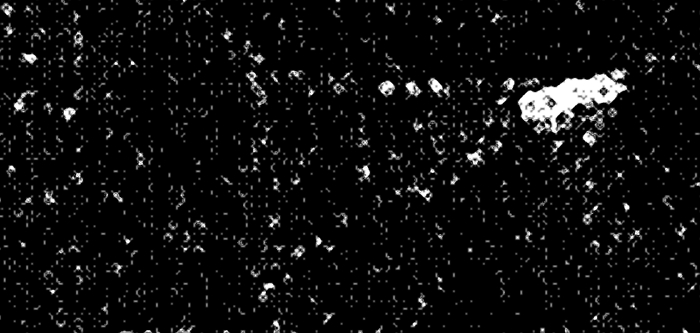Background
Simulations play a key role in the verification of autonomous systems. For instance, hardware-in-the-loop (HIL) or software-in-the-loop (SIL) simulation allows the engineer to test how an autonomous system will respond to many more scenarios than those one can afford to encounter in the real world. Video game technology is a crucial enabler for this kind of simulations, because game engines provide 3D rendering capabilities that can be used to simulate sensor data.
In the Autoferry Gemini, the digital twin of the autonomous ferries milliAmpere 1 & 2, both lidar data, camera data, infrared data and radar data are simulated in this manner. However, the realism of the different sensor modalities is somewhat variable. Realistic lidar data is perhaps the easiest to simulate, because each lidar beam is either reflected or it is not reflected. Optical data also have a high degree of realism, since the simulation of video after all is the primary purpose of the underlying game engine. Infrared data are more challenging because the infrared radiation depends on the temperature of different objects, for which we may not have good physical models. Radar is also challenging because the longer wavelength of radio waves leads to complicated blurring and interference effects. Nevertheless, for autonomous surface vessels, radar is the most ubiquitous of the four sensor modalities.
Scope
The objective of this project is to investigate how data from an off-the-shelf maritime radar can be simulated in the framework of Autoferry Gemini.
Proposed Tasks for the 5th year project
The 5th year project should aim to answer the following research question: How simple can a radar simulator be and still provide data with the same characteristics as real data from an off-the-shelf maritime radar? While radar simulation is a scientific discipline in itself, most of the theoretical results do not directly pertain to low-cost radars, because the user of a low-cost radar in most cases only get access to the heavily processed output of the radar, and is given little to no insight into the signal processing of the radar. In other words, it is futile to aim for a faithful reproduction of the radar, and the best the user can hope for is something that looks similar for practical purposes. The 5th year project involves the following tasks:
- Literature study: Summarize aspects of wave physics, radar signal processing, detection theory and radar tracking that are relevant for low-cost radar simulation.
- Compare the existing capabilities of radar simulation in Autoferry Gemini and real radar data. Discuss similarities and differences.
- Express a low-cost radar simulation model in mathematical terms, using only radar cross-section (RCS) and blurring properties to begin with. Define the calculation of RCS for various targets of interest.
- Integrate the proposed model in Autoferry Gemini and see whether you can generate data with blurring properties similar to real data from a low-cost radar.
- If time permits: Experiment with additional clutter sources, multiple returns etc.
 |
| Real data from a Navtech radar and simulated radar data from Autoferry Gemini. |
Proposed Tasks for the MSc thesis
The overarching goal of the Master’s thesis is to increase the realism so that the simulator can mimic most of the real effects that are expected to challenge radar-based situational awareness in real-world autonomous surface vessels. The Master’s thesis may involve one or more of the following tasks:
- Waves and air bubbles on the sea surface are important sources of radar clutter in the real world. The simulation of raw radar data with sea clutter is a fairly complex tasks, and several different models for sea clutter have been proposed in the research literature. However, for a low-cost radar the details of different models will be indistinguishable due to its “gray box” nature as discussed above. Explore statistical models (e.g. in terms of Point Processes) or machine learning as alternatives to physics-based modeling of sea clutter.
- Different targets have different shapes and different reflectivities, and also different parts of a single vessel may have different reflectivities. Furthermore, one target could be in the radar shadow of another target. Include these effects in the simulator.
- Ship wakes are a source of clutter, both for radar, camera and lidar. A realistic wake model should take into account Kelvin’s wake model.
- Increase the fidelity of the simulation by also simulate the raw amplitude data that one can expect to have in a more advanced radar.
 |
| A ship and its wake as seen in post-processed radar data. |
Prerequisites
Additional background in physics or signal processing, or experience with radar systems will be beneficial.
Contact
Supervisors: Edmund Brekke, Egil Eide and Kjetil Vasstein